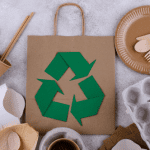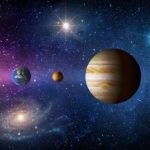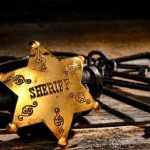 Music
Music  Music
Music  History
History 10 Less Than Jolly Events That Occurred on December 25
 Weird Stuff
Weird Stuff 10 Funny Ways That Researchers Overthink Christmas
 Politics
Politics 10 Political Scandals That Sent Crowds Into the Streets
 Weird Stuff
Weird Stuff Ten Bizarre Facts About The Doge Meme
 Our World
Our World 10 Ways Your Christmas Tree Is More Lit Than You Think
 Movies and TV
Movies and TV The 10 Coolest Stars to Set Sail on The Love Boat
 History
History 10 Things You Didn’t Know About the American National Anthem
 Technology
Technology Top 10 Everyday Tech Buzzwords That Hide a Darker Past
 Humans
Humans 10 Everyday Human Behaviors That Are Actually Survival Instincts
 Music
Music 10 Surprising Origin Stories of Your Favorite Holiday Songs
 History
History 10 Less Than Jolly Events That Occurred on December 25
 Weird Stuff
Weird Stuff 10 Funny Ways That Researchers Overthink Christmas
Who's Behind Listverse?

Jamie Frater
Head Editor
Jamie founded Listverse due to an insatiable desire to share fascinating, obscure, and bizarre facts. He has been a guest speaker on numerous national radio and television stations and is a five time published author.
More About Us Politics
Politics 10 Political Scandals That Sent Crowds Into the Streets
 Weird Stuff
Weird Stuff Ten Bizarre Facts About The Doge Meme
 Our World
Our World 10 Ways Your Christmas Tree Is More Lit Than You Think
 Movies and TV
Movies and TV The 10 Coolest Stars to Set Sail on The Love Boat
 History
History 10 Things You Didn’t Know About the American National Anthem
 Technology
Technology Top 10 Everyday Tech Buzzwords That Hide a Darker Past
 Humans
Humans 10 Everyday Human Behaviors That Are Actually Survival Instincts
10 Common Practices That Actually Damage Ecosystems
The health of our planet’s ecosystems is crucial for the survival of countless species, including humans. However, many everyday practices, often seen as harmless or even beneficial, can significantly harm these delicate environments. In an era where environmental conservation is more critical than ever, understanding the impact of our actions is paramount. From the overuse of antibacterial soaps to the unchecked spread of invasive species, these practices disrupt natural balances and lead to long-term negative consequences.
Related: 10 Environmentally Friendly NASA Spinoffs
10 Overuse of Antibacterial Soaps
The overuse of antibacterial soaps, particularly those containing triclosan and triclocarban, has raised significant environmental and health concerns. Triclosan is a synthetic antibacterial agent commonly added to personal care products such as soaps, toothpaste, and deodorants. When these products are used and washed down the drain, triclosan enters wastewater systems and can ultimately find its way into rivers, lakes, and oceans.
Studies have shown that triclosan is not fully removed during wastewater treatment processes, leading to its accumulation in aquatic environments. This accumulation can disrupt the natural microbial communities essential for ecosystem health. It can be toxic to aquatic organisms, including algae, fish, and amphibians.
In aquatic ecosystems, triclosan exposure has been linked to a range of harmful effects on wildlife. For example, it can interfere with the growth and reproduction of algae, which are foundational to aquatic food webs. Fish exposed to triclosan have shown altered hormone levels and reduced reproductive success. Additionally, when exposed to sunlight, triclosan can break down into dioxins, which are highly toxic and long-lasting pollutants. These dioxins can accumulate in the food chain, posing long-term risks to wildlife and potentially to humans who eat contaminated fish and drink affected water.[1]
9 Glitter Use
Glitter, often made from tiny pieces of plastic known as microplastics, poses significant environmental hazards, especially to marine ecosystems. When washed down the drain after being used in cosmetics, crafts, and other products, these tiny plastic particles are too small to be filtered out by wastewater treatment plants. Consequently, they make their way into rivers, lakes, and oceans.
Once in aquatic environments, glitter is ingested by marine organisms, from small fish to larger sea animals, leading to physical harm and the potential for toxic substances to enter the food chain. Studies have shown that microplastics, including glitter, can carry pollutants such as pesticides and heavy metals, accumulating in marine life and potentially impacting human health through seafood consumption.
The problem is made worse because glitter is incredibly resilient in the environment. Unlike organic materials, microplastics do not biodegrade and can persist for hundreds of years. Additionally, glitter’s reflective properties can disrupt the feeding and breeding behaviors of some marine species, further impacting biodiversity. Some countries and regions have started to ban or limit the use of microplastics in cosmetics, including glitter. Consumers can also help by choosing biodegradable options made from materials like cellulose or mica.[2]
8 Buying Non-Native Pets
Introducing non-native pets into local environments can have serious ecological consequences, particularly if these pets escape or are released into the wild. Non-native species can become invasive, outcompeting native wildlife for resources like food and habitat. This competition can lead to a decline in native species populations, disrupting local ecosystems.
For example, the Burmese python, originally from Southeast Asia, has established a breeding population in the Florida Everglades after being released or escaping from captivity. These large predators have significantly reduced populations of small mammals and birds in the region, causing imbalances in the ecosystem.
Non-native pets can also introduce diseases to which local wildlife have no immunity. This can lead to outbreaks that devastate native animal populations. In Australia, the introduction of the European rabbit has led to widespread habitat destruction.[3]
7 Artificial Turf
Artificial turf, while popular for its low maintenance and aesthetic appeal, poses several environmental risks that often go unnoticed. One major issue is its contribution to microplastic pollution. Artificial turf is composed of synthetic fibers that can degrade over time due to weather, UV radiation, and wear and tear from use.
As these fibers break down, they release microplastics into the environment. These tiny plastic particles can be carried by wind or water into surrounding ecosystems, potentially entering waterways and oceans. Once there, they can be ingested by marine life, causing harm to organisms and potentially entering the human food chain.
Additionally, artificial turf contributes to the urban heat island effect. Unlike natural grass, which provides cooling through evapotranspiration, artificial turf absorbs and retains heat, raising surface temperatures significantly. This effect can increase local temperatures, exacerbate energy consumption for cooling, and negatively impact local flora and fauna.
Furthermore, artificial turf lacks the ecological benefits of natural grass, such as providing a habitat for insects and other small organisms, supporting soil health, and contributing to the carbon cycle. The installation and disposal of artificial turf also have environmental costs, including using non-renewable materials and producing greenhouse gases.[4]
6 Using Wet Wipes
Wet wipes are a commonly used household item for personal hygiene and cleaning purposes, but their disposal poses significant environmental challenges. Most wet wipes contain synthetic fibers, such as polyester and polypropylene, which do not biodegrade. When these wipes are flushed down toilets, they can cause blockages in sewer systems, as they do not break down like toilet paper. This leads to costly plumbing issues and can result in sewage overflows.
These blockages are often referred to as “fatbergs” when combined with fats, oils, and grease, creating massive, congealed masses that can damage infrastructure and require extensive efforts to remove. When wet wipes enter natural water systems, they significantly contribute to marine pollution. The plastic fibers in these wipes are harmful to aquatic life, and microplastics can enter the human food chain through seafood consumption.[5]
5 Improper Disposal of Sunscreen
Improper disposal of sunscreen, particularly those containing chemicals like oxybenzone and octinoxate, has significant detrimental effects on marine ecosystems. When individuals apply sunscreen and then enter the ocean, these chemicals wash off their skin and enter the water. Even trace amounts can cause coral bleaching, a process where corals lose their vibrant colors and essential symbiotic algae, leading to weakened corals and potentially entire reef die-offs.
Coral reefs are vital ecosystems that support a vast array of marine life; thus, their degradation can have cascading effects throughout the oceanic food web. These chemicals have also been found to impair the growth, reproduction, and overall health of various marine organisms, including fish and invertebrates.
Beyond the immediate effects on marine life, the contamination from sunscreen chemicals can accumulate in aquatic environments over time, leading to long-term ecological damage. Many sunscreens are not biodegradable, meaning these harmful substances persist in the environment and continuously affect marine life.
This issue is exacerbated in popular tourist destinations where sunscreen use is high, leading to concentrated levels of these pollutants in local waters. To mitigate these impacts, some regions have begun to ban sunscreens containing harmful chemicals, promoting the use of mineral-based sunscreens with ingredients like zinc oxide or titanium dioxide, which are less harmful to marine ecosystems.[6]
4 Feeding Wildlife
Not feeding wildlife is something many of us have heard countless times. When wild animals get used to being fed by humans, they can lose their natural foraging instincts and become dependent on human-provided food. This dependency can lead to malnutrition, as the food offered is often not nutritionally suitable for them. For example, feeding bread to ducks can cause “angel wing,” a deformity from a high-calorie, low-nutrient diet that can leave birds unable to fly.
Feeding wildlife can also disrupt their natural behaviors, leading to changes in migration patterns and social structures within animal communities. It can also increase the risk of disease transmission, both among wildlife and between animals and humans. Congregating around food sources provided by humans can lead to overcrowding, which facilitates the spread of diseases.
This close contact also increases the likelihood of human-wildlife conflicts, as animals may become more aggressive or lose their natural fear of humans. In urban settings, this can lead to dangerous situations, such as larger animals like bears or coyotes becoming habituated to human presence.[7]
3 Balloon Releases
Balloon releases are often associated with celebrations and commemorations, but they carry hidden environmental consequences that can cause significant harm to ecosystems. When balloons are released into the air, they eventually deflate and fall back to Earth, often landing in oceans, rivers, and landscapes. These deflated balloons, along with their attached ribbons, can be mistaken for food by wildlife, leading to ingestion and potential fatality.
Marine animals, such as sea turtles, are particularly at risk as they can confuse balloons for jellyfish, their natural prey. The ingestion of balloons can lead to intestinal blockages, starvation, and even death. Moreover, animals can become entangled in the attached ribbons, leading to injury or restricted movement, further exacerbating their survival challenges.
Beyond the physical dangers to wildlife, balloon releases contribute to pollution and litter in natural environments. Once deflated, balloons add to the growing problem of marine and terrestrial litter. Unlike other forms of waste, balloons are not biodegradable; they persist in the environment for years.[8]
2 Using Peat Moss in Gardening
Using peat moss in gardening may seem like a harmless practice, but it has significant environmental implications. Peat moss is harvested from peat bogs, which are unique and fragile ecosystems that take thousands of years to form. These bogs play a crucial role in carbon sequestration, storing large amounts of carbon dioxide that would otherwise contribute to global warming.
When peat is extracted, it releases this stored carbon dioxide into the atmosphere, exacerbating climate change. Additionally, peat extraction disrupts the water balance in these areas, affecting local biodiversity and potentially leading to the loss of rare plant and animal species unique to peat bog environments.
Using peat moss in gardening is popular due to its ability to retain moisture and provide a suitable growing medium for plants. However, the environmental costs far outweigh these benefits. As awareness of the ecological impact of peat harvesting grows, gardeners are increasingly encouraged to use more sustainable alternatives, such as coconut coir, compost, and other organic materials.[9]
1 Collecting Shells and Rocks from Beaches
While taking a few shells as souvenirs might seem harmless, it’s important to consider the broader environmental impact and respect local conservation efforts. Shells play a crucial role in coastal ecosystems, providing habitat and protection for various marine organisms. Hermit crabs use abandoned shells as homes, and some species rely on the calcium from broken shells to build their structures.
Shells also contribute to the beach’s natural sediment and help prevent erosion by stabilizing the sand. Removing shells in large numbers can disrupt these processes, leading to a loss of biodiversity and destabilizing the shoreline. Beyond their ecological roles, shells and rocks are part of the cultural and natural heritage of coastal areas. They add to the aesthetic beauty of beaches. They are often studied for scientific research, offering insights into the history and health of marine environments.
Removing these natural elements, especially in popular tourist spots, can diminish the natural beauty and scientific value of these areas. In some places, the over-collection of shells has led to regulations and restrictions to protect local ecosystems.[10]








